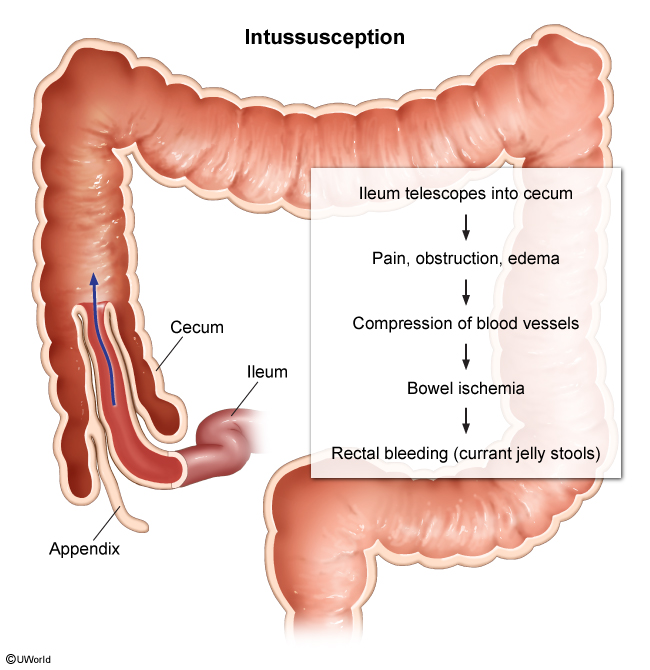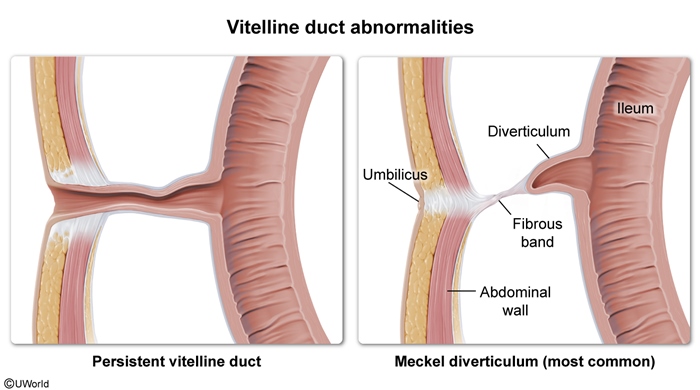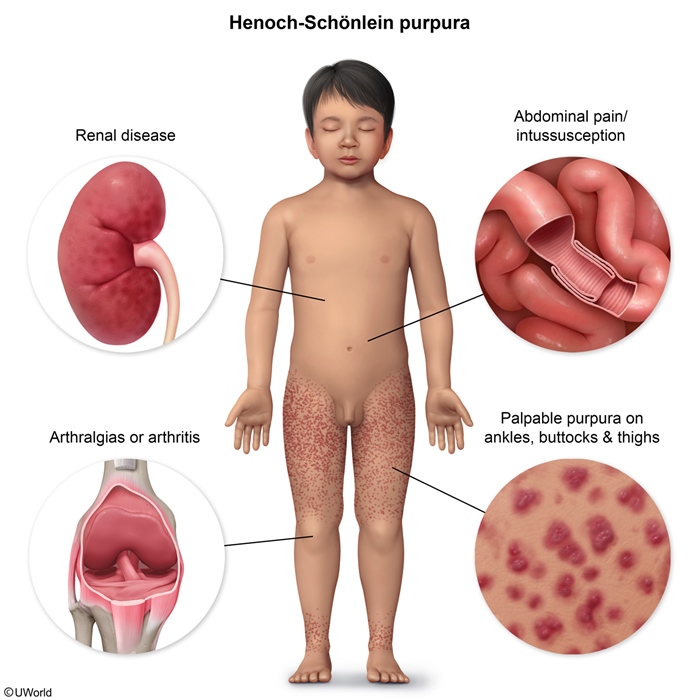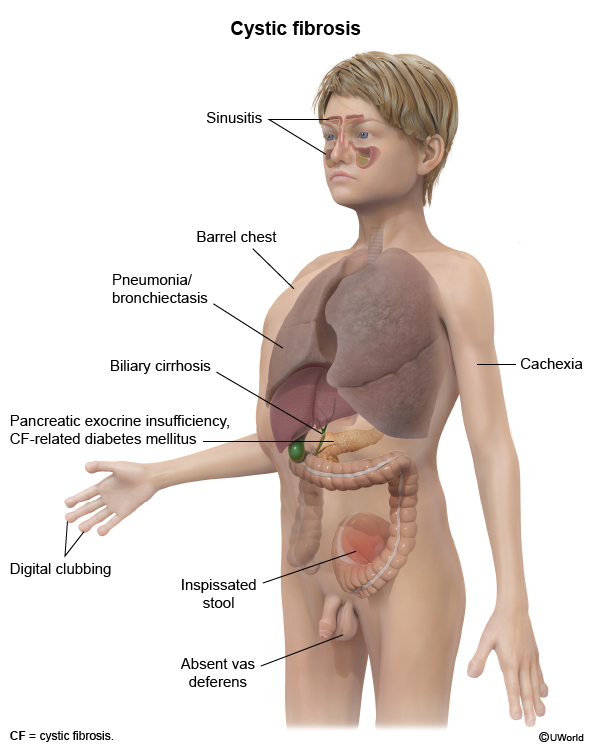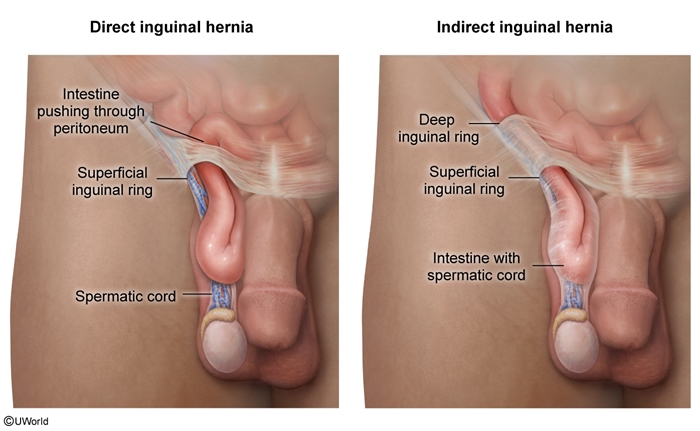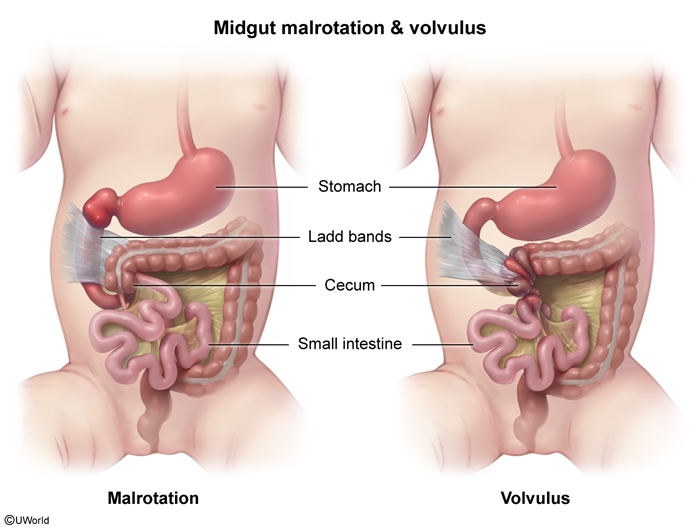Intussusception
Article Sections
Introduction
Intussusception is a medical emergency characterized by the telescoping of a segment of the intestine into an adjacent segment, leading to obstruction, ischemia, and potential necrosis. This condition affects primarily infants and young children (particularly age 6 months to 3 years) but can occur at older ages.
Pathophysiology and risk factors
Intussusception occurs when a segment of the intestine telescopes into an adjacent segment (Figure 1). This can lead to impaired venous return of the invaginated segment, causing ischemia and necrosis of the intestinal wall. Although the majority of cases are idiopathic, some cases are associated with viral infections (eg, adenovirus) that stimulate growth of lymphoid follicles within the small intestine (ie, Peyer patches). This lymphoid hyperplasia can act as a physiologic lead point that becomes trapped by peristalsis and is dragged into a distal segment of the intestine. The most common location is at the ileocecal junction, likely due to a dense concentration of Peyer patches in the terminal ileum.
Continue Learning with UWorld
Get the full Intussusception article plus rich visuals, real-world cases, and in-depth insights from medical experts, all available through the UWorld Medical Library.
Figures
